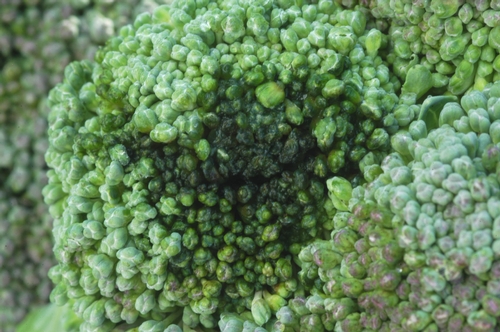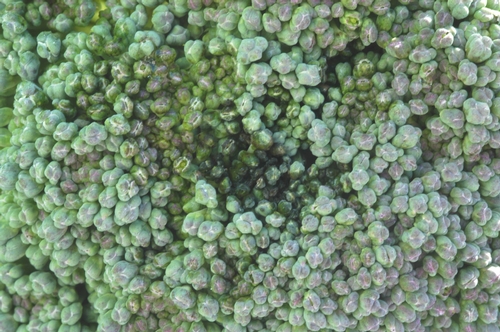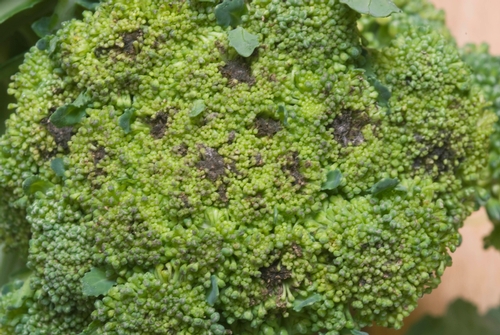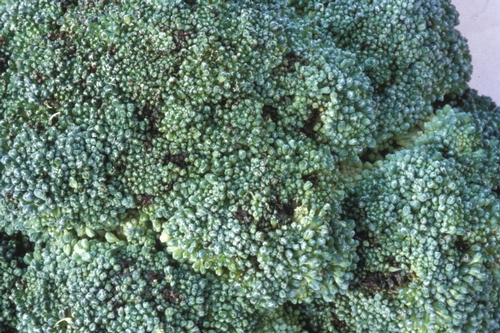Experienced growers, pest control advisors, and other field professionals involved with broccoli already know that the winter period can signal increased problems due to head rot (also known as pin rot). Favored by cool temperatures and prolonged periods of moisture from rain, dew, and fog, broccoli head rot continues to be a damaging and yield-reducing factor because preventative measures have yet to be consistently effective. Spray applications have not proven to be consistently reliable tools to prevent head rot. While some cultivars (especially those having rounded, dome-shaped heads) may be less susceptible to head rot, true resistance has not been demonstrated for cultivars grown in California. Trying to avoid the use of overhead sprinkler irrigation is apparently the only cultural practice that helps reduce disease; however, the winter and early spring weather will enhance head rot even if growers use drip or furrow irrigation.
Field personnel should remember that two types of head rot affect the crop in California. For bacterial head rot, initial symptoms on the immature broccoli heads consist of a water-soaked or greasy discoloration of the surfaces of small groups of the unopened flowers. Later, the affected portions of the head turn brown to black and the infection spreads and affects larger parts of the head. The tissue becomes soft and gives off a very bad odor. For bacterial head rot there will not be any fungal growth unless secondary molds colonize and cause further decay.
The second type of head rot is Alternaria head rot. For this fungal problem, early symptoms consist of a water-soaked discoloration that later turns dark brown to black. Tissues infected with Alternaria are usually not as soft and smelly as heads infected with the bacterial pathogens. Alternaria readily produces dark green spores on the diseased head tissue. Secondary molds and bacteria cause further decay.

Photo 1: Bacterial head rot of broccoli

Photo 2: Bacterial head rot of broccoli

Photo 3: Alternaria head rot of broccoli

Photo 4: Alternaria head rot of broccoli